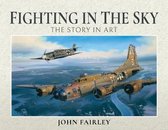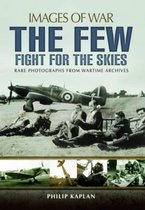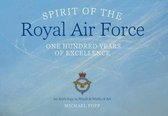To Rule The Winds Air War on the Western Front 1914-1918
Afbeeldingen
Sla de afbeeldingen overArtikel vergelijken
Auteur:
Michael C. Fox
- Engels
- Hardcover
- 9781909982260
- 01 november 2019
- 432 pagina's
Samenvatting
This second Volume in the To Rule the Winds series deals with the evolution of the Royal Flying Corps through the First World War and its transformation, in 1918, into the Royal Air Force. It focuses on the migration of the Army's Air Service - and to some extent the Navy's separate Air Service - towards a British Air Force intended to wipe the enemy's Air Service from the sky and provide an aerial umbrella under which the Army's Expeditionary Force on the ground could eventually move forward to victory. While the resulting Air Force was not entirely successful in the grand objective of ruling the air, it did enough. But to do so, it had to change fundamentally. In August 1914 the British Air Service - or, at least, the Army's Wing of it - that went to France as part of the British Expeditionary Force comprised four squadrons populated with a small collection of slow and unarmed reconnaissance aeroplanes, typically the Royal Aircraft Factory's B.E.2 types, plus an even smaller scattering of somewhat faster but still unarmed single-seater scouting aeroplanes like the Bristol Scout and sundry Bleriot types. There was no specialisation worth the name: the aeroplanes of the Military Wing were just about all that were flyable; there was no plan for the future, precious little in the way of reserves and no duty other than to watch the enemy's forces on the ground. When the War ended in November 1918 there was a national, a Royal, Air Force of many squadrons: the Royal Naval Air Service had been (at least in principle and temporarily) rolled in; there were still the squadrons of reconnaissance machines, but faster, armed for defence and more robust. There were squadrons of bombing machines: like the reconnaissance machines, but more powerful and capable of carrying heavy bomb loads over distances that made strategic bombing a practical proposition. Finally, there were fighter squadrons, something of a real innovation, fast and manoeuvrable mostly single-seater gun platforms. Although an Independent bomber force was created during 1918 there was not, even by the war's end, a fighter force - just squadrons. This Volume continues the underlying theme of the whole series: the development of the fighter force - a co-ordinated group of fighting squadrons adapted and later designed primarily to fight in the air against other aeroplanes.
Productspecificaties
Wij vonden geen specificaties voor jouw zoekopdracht '{SEARCH}'.
Inhoud
- Taal
- en
- Bindwijze
- Hardcover
- Oorspronkelijke releasedatum
- 01 november 2019
- Aantal pagina's
- 432
- Illustraties
- Nee
Betrokkenen
- Hoofdauteur
- Michael C. Fox
- Hoofduitgeverij
- Helion & Company
Overige kenmerken
- Extra groot lettertype
- Nee
- Product breedte
- 16.70 cm
- Product hoogte
- 2.70 cm
- Product lengte
- 24.30 cm
- Studieboek
- Nee
- Verpakking breedte
- 156 mm
- Verpakking hoogte
- 234 mm
- Verpakking lengte
- 234 mm
- Verpakkingsgewicht
- 0.95 kg
EAN
- EAN
- 9781909982260
Je vindt dit artikel in
- Categorieën
- Boek, ebook of luisterboek?
- Boek
- Taal
- Engels
- Korting
- Vanaf 5%
- Beschikbaarheid
- Te reserveren
Kies gewenste uitvoering
Kies je bindwijze
(2)
Prijsinformatie en bestellen
De prijs van dit product is 45 euro en 99 cent. De meest getoonde prijs is 50 euro en 99 cent. Je bespaart 10%.
Je bespaart 10%
Nog niet verschenen - reserveer een exemplaar
Beschikbaar op 15-07-2024
Verkoop door bol
- Prijs inclusief verzendkosten, verstuurd door bol
- Ophalen bij een bol afhaalpunt mogelijk
- 30 dagen bedenktijd en gratis retourneren
- Dag en nacht klantenservice
Rapporteer dit artikel
Je wilt melding doen van illegale inhoud over dit artikel:
- Ik wil melding doen als klant
- Ik wil melding doen als autoriteit of trusted flagger
- Ik wil melding doen als partner
- Ik wil melding doen als merkhouder
Geen klant, autoriteit, trusted flagger, merkhouder of partner? Gebruik dan onderstaande link om melding te doen.








